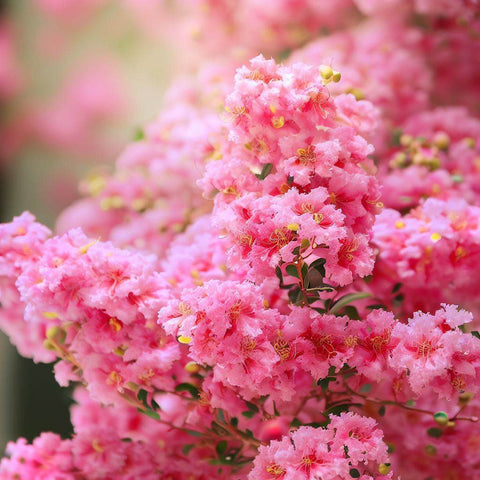Table of Contents
- Introduction
- Benefits of Flowering Trees
- Popular Varieties of Flowering Trees
- Planting and Caring for Flowering Trees
- Maintenance Tips
- Landscaping with Flowering Trees
- Pruning Techniques
- Common Issues and Solutions
- Attracting Wildlife with Flowering Trees
- Seasonal Bloom Calendar
- Best Locations for Flowering Trees
- Design Ideas with Flowering Trees
- Conclusion
- FAQs
Introduction
Flowering trees add beauty and color to any landscape. Their vibrant blooms create a stunning visual display that can uplift the spirit and enhance the overall aesthetics of an outdoor space. In this article, we will explore the various benefits of flowering trees, popular varieties to consider, tips for planting and care, landscaping ideas, and more. So, let's dive into the world of flowering trees and discover how they can transform your surroundings.
Benefits of Flowering Trees
Flowering trees offer numerous benefits beyond their visual appeal. Here are some advantages of incorporating flowering trees into your landscape:
1. Enhancing Curb Appeal
Flowering trees bring a burst of color and beauty to your property, instantly enhancing its curb appeal. The vibrant blooms create an inviting and eye-catching display that can make your home or business stand out.
2. Creating a Tranquil Environment
The presence of flowering trees in your outdoor space can create a peaceful and serene environment. Their gentle swaying branches and sweet fragrance contribute to a calming atmosphere, making it an ideal place to relax and unwind.
3. Providing Shade and Privacy
Large flowering trees can provide ample shade, protecting you and your outdoor spaces from the harsh sun during hot summer days. Additionally, their dense foliage can act as a natural privacy screen, shielding your property from prying eyes.
4. Supporting Biodiversity
Flowering trees attract pollinators such as bees, butterflies, and hummingbirds, contributing to the overall biodiversity of your garden. By providing a food source and habitat, these trees play a vital role in supporting local ecosystems.
Popular Varieties of Flowering Trees
When selecting flowering trees for your garden or landscape, it's essential to choose varieties that thrive in your specific climate. Here are some popular flowering trees known for their beautiful blooms:
1. Cherry Blossom Trees
Cherry blossom trees are revered for their delicate pink or white flowers that blanket the landscape in springtime. These iconic trees symbolize beauty and renewal, and their blossoms create a captivating sight that attracts visitors from around the world.
2. Dogwood Trees
Dogwood trees produce clusters of vibrant flowers in shades of white, pink, or red. Their blossoms are often accompanied by attractive foliage, adding interest to the landscape throughout the growing season. Dogwoods are also known for their ornamental berries and stunning fall foliage.
3. Magnolia Trees
Magnolia trees are renowned for their large, showy flowers that come in various colors, including white, pink, and purple. These elegant trees create a dramatic focal point in any garden and emit a delightful fragrance that fills the air.
4. Jacaranda Trees
Jacaranda trees are famous for their stunning blue or purple blooms that cover the tree canopy, creating a breathtaking display. These trees thrive in warm climates and add a touch of tropical beauty to any landscape.
5. Crabapple Trees
Crabapple trees produce clusters of fragrant flowers in shades of white, pink, or red. Beyond their beautiful blooms, they also bear small fruits that attract wildlife, making them a favorite among gardeners looking to create a wildlife-friendly environment.
Planting and Caring for Flowering Trees
Proper planting and care techniques are crucial for the health and longevity of flowering trees. Here are some tips to ensure your flowering trees thrive:
1. Choosing the Right Location
Before planting a flowering tree, consider its specific sunlight and soil requirements. Select a location that provides adequate sunlight and well-drained soil to promote healthy growth and blooming.
2. Digging the Planting Hole
Dig a hole that is wider and slightly shallower than the root ball of the tree. Gently loosen the roots and place the tree in the hole, making sure it is positioned at the same depth as it was in the nursery container.
3. Backfilling and Watering
Backfill the hole with soil, gently firming it around the roots. Water the tree thoroughly to settle the soil and remove any air pockets. Apply a layer of mulch around the base of the tree to conserve moisture and suppress weeds.
4. Watering and Fertilizing
Provide regular watering, especially during dry periods, to keep the soil moist but not waterlogged. Fertilize the tree with a balanced, slow-release fertilizer in the early spring to support healthy growth and blooming.
5. Pruning and Maintenance
Prune your flowering tree during the dormant season to remove any dead or damaged branches and promote better airflow. Regularly inspect the tree for pests or diseases and take appropriate measures to address any issues.
Maintenance Tips
Maintaining flowering trees is essential to ensure their health and longevity. Here are some maintenance tips to keep in mind:
1. Regular Watering
Proper watering is crucial for the health of flowering trees. Provide deep, thorough watering to reach the root zone and ensure the soil remains evenly moist. Adjust the frequency of watering based on weather conditions.
2. Mulching
Apply a layer of organic mulch around the base of the tree, leaving a gap between the mulch and the trunk. Mulching helps retain moisture, suppresses weeds, and regulates soil temperature. It also adds organic matter to the soil as it breaks down over time.
3. Fertilization
Feed your flowering trees with a balanced, slow-release fertilizer in the early spring to provide them with essential nutrients for healthy growth and blooming. Follow the manufacturer's instructions for the appropriate dosage and application method.
4. Pruning
Regular pruning is necessary to maintain the shape and structure of flowering trees. Remove any dead, damaged, or crossing branches to promote better air circulation and prevent disease. Prune in the dormant season to minimize stress on the tree.
5. Pest and Disease Control
Monitor your flowering trees for signs of pests and diseases, such as aphids, scale insects, or fungal infections. Take appropriate measures, such as using organic insecticides or consulting a professional arborist, to control and prevent infestations.
Landscaping with Flowering Trees
Flowering trees can greatly enhance the beauty of your landscape. Here are some ideas for incorporating flowering trees into your outdoor space:
1. Focal Points and Specimen Trees
Use flowering trees as focal points in your garden or landscape design. Plant them as standalone specimens to create visual interest and draw attention to specific areas of your yard.
2. Privacy Screens
Plant flowering trees in rows or clusters to create natural privacy screens. The dense foliage and blossoms will not only provide privacy but also add beauty and color to your outdoor space.
3. Colorful Borders
Border your garden beds or pathways with flowering trees to add a splash of color and define the space. Choose varieties that complement the surrounding plants and create a cohesive and visually appealing garden design.
4. Seasonal Interest
Select flowering trees that offer different bloom times throughout the seasons. This way, you can enjoy a continuous display of flowers and colors in your landscape, ensuring year-round visual interest.
Pruning Techniques
Pruning is important for shaping and maintaining the health of flowering trees. Here are some pruning techniques to consider:
1. Structural Pruning
Perform structural pruning during the early years of the tree's growth to establish a strong framework. Remove any competing or crossing branches, and maintain a balanced shape with a central leader.
2. Deadheading
Deadhead spent flowers regularly to encourage new blooms and prolong the flowering period. Cut the faded flowers just above a healthy bud or branch to redirect the tree's energy towards new growth.
3. Thinning
Thinning involves selectively removing certain branches to improve airflow and reduce the risk of disease. Focus on removing any crowded or weak branches to enhance the overall health and appearance of the tree.
4. Crown Reduction
Crown reduction is a pruning technique used to reduce the size of the tree's canopy. It involves strategically removing larger branches to maintain a balanced and manageable size while preserving the overall structure of the tree.
Common Issues and Solutions
Flowering trees can face certain challenges that may affect their growth and bloom. Here are some common issues and solutions:
1.
- Seasonal Bloom Calendar
- Best Locations for Flowering Trees
- Design Ideas with Flowering Trees
- Conclusion
- FAQs
Conclusion
Flowering trees bring beauty, color, and a touch of nature to any landscape. By selecting the right varieties, planting and caring for them properly, and incorporating them into your design, you can create a stunning outdoor space that blooms with vibrancy throughout the seasons. Explore the world of flowering trees and unleash their transformative power in your surroundings.
FAQs
Q1: Can I plant flowering trees in any season?
A1: While the ideal time for planting flowering trees is during the dormant season in late winter or early spring, some varieties can also be planted in the fall or early summer. It's best to consult local gardening resources or a horticulturist for specific recommendations based on your location.
Q2: How often should I water my flowering trees?
A2: The watering frequency for flowering trees depends on various factors such as soil type, weather conditions, and tree age. As a general guideline, it's recommended to water deeply once or twice a week during dry spells, ensuring the soil around the tree's root zone remains moist but not waterlogged.
Q3: Do flowering trees require pruning?
A3: Yes, pruning is beneficial for flowering trees as it helps maintain their shape, promote healthy growth, and improve blooming. However, the pruning requirements may vary depending on the specific tree species. It's advisable to research or consult a professional arborist for proper pruning techniques and timing for your particular flowering tree.
Q4: Can flowering trees attract pollinators?
A4: Absolutely! Flowering trees are known to attract various pollinators such as bees, butterflies, and hummingbirds. The vibrant blooms and nectar-rich flowers provide a valuable food source for these important pollinating insects and birds, contributing to the overall ecosystem and biodiversity in your garden.
Q5: Can I grow flowering trees in containers or pots?
A5: Some smaller varieties of flowering trees can be grown in containers or pots, allowing you to enjoy their beauty even in limited spaces. However, it's essential to choose a suitable container size, use well-draining soil, and provide adequate care, including regular watering and fertilization. Additionally, container-grown trees may require more attention and protection during extreme weather conditions.
Q6: How long do flowering trees typically live?
A6: The lifespan of flowering trees can vary depending on several factors, including the specific tree species, growing conditions, and maintenance practices. On average, flowering trees can live anywhere from 20 to 50 years or more. With proper care, some long-lived species can even reach a lifespan of several decades, providing beauty and enjoyment for generations to come.
Q7: Can I propagate flowering trees from seeds?
A7: Yes, many flowering trees can be propagated from seeds. However, it's important to note that growing trees from seeds can be a longer and more challenging process compared to other propagation methods such as grafting or taking cuttings. It requires patience, proper seed collection, storage, and suitable growing conditions. Consider researching specific instructions for the particular flowering tree species you wish to propagate.






























Comments (0)
There are no comments for this article. Be the first one to leave a message!